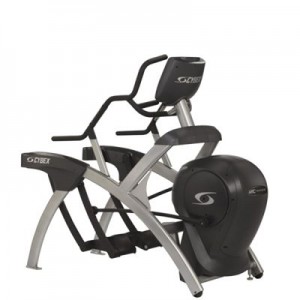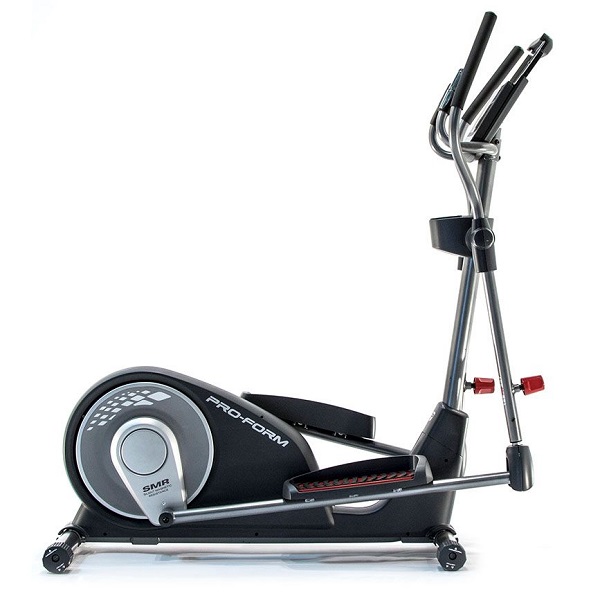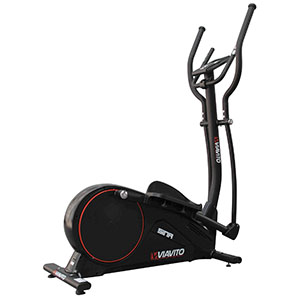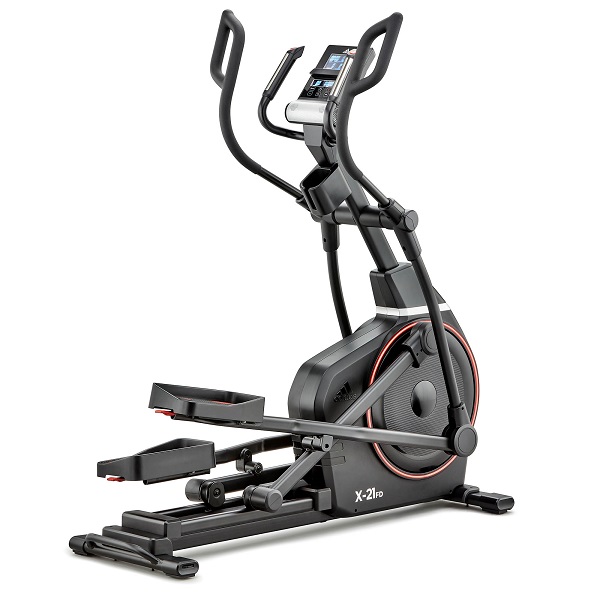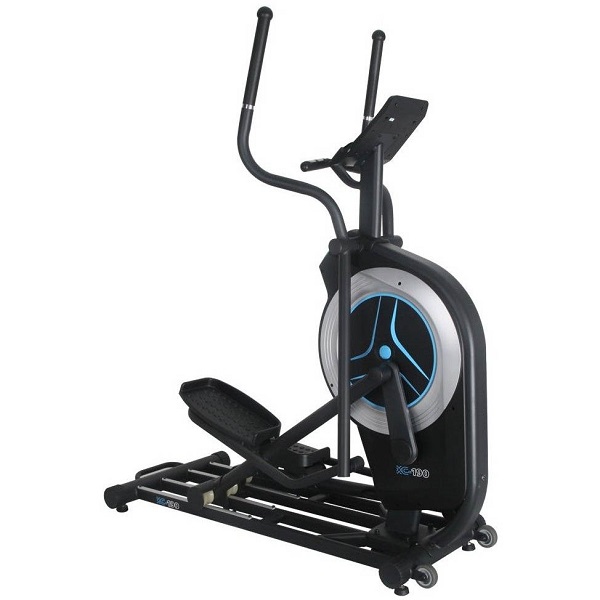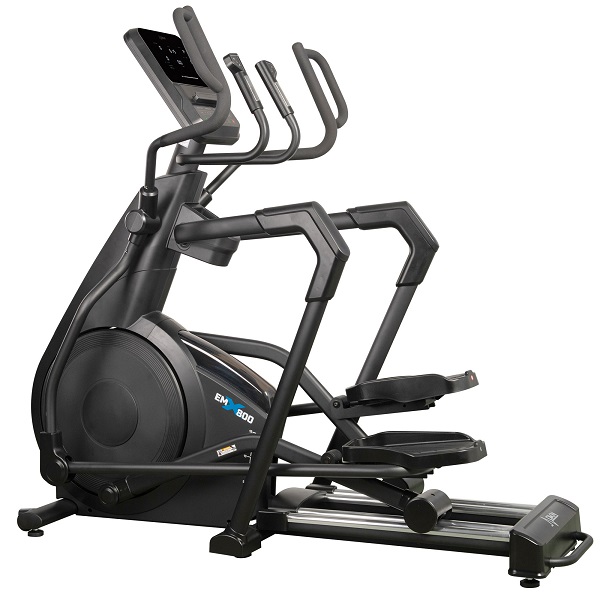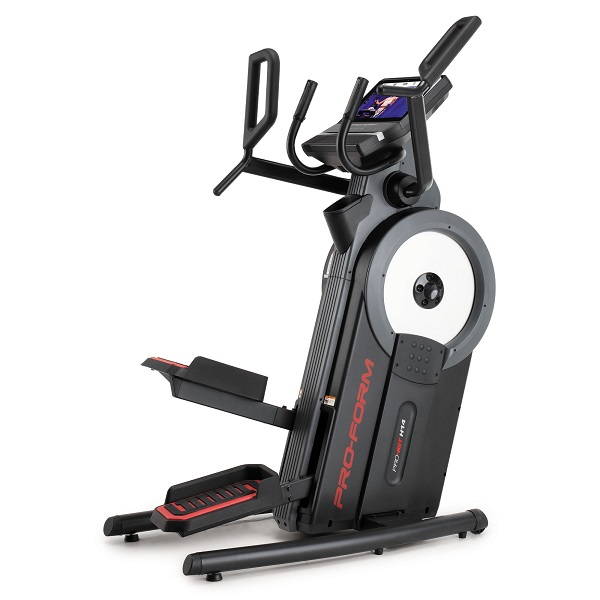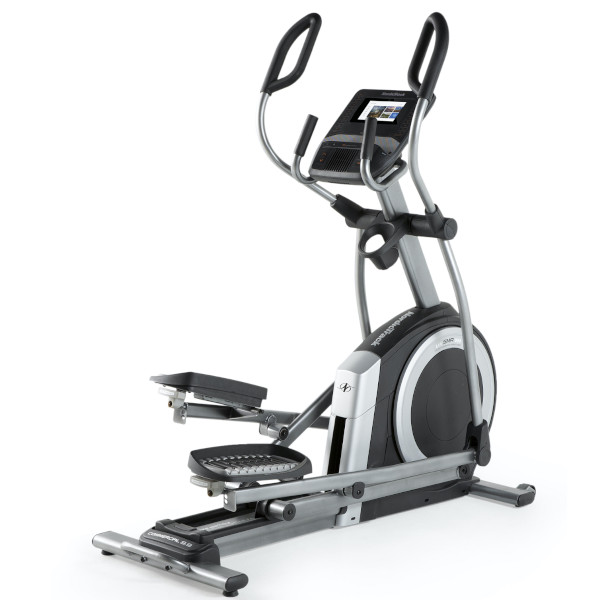Buying An Elliptical Trainer – A Buyer’s Guide To Finding The Right Model
Buying an elliptical trainer can be a little confusing if you don’t know what to look for. You can pay anything from around £80 to well over £3,500 so you can appreciate there’s quite a difference between the hundred plus models currently available in the UK – and this number grows on a weekly basis!
Before we go on many people ask what is the difference between an elliptical trainer and a cross trainer? They are effectively the same, ‘elliptical’ refers to the action your feet make whilst ‘cross’ is about using your arms at the same time.
So technically, if you take your hands off the moving handles and place them on the static rests you’re now purely using an elliptical trainer, put them back on and it’s a cross trainer again – two machines for the price of one!
Anyway, before you decide if buying an elliptical trainer is for you, ask yourself …
What are my health and fitness goals?
If you’re looking to lose weight, tone-up and get fit then the elliptical trainer will take you a huge step towards your goals combined with a healthy diet and other lifestyle changes.
It will do it for a reasonable price and require much less space than a rowing machine or treadmill. An exercise bike would take up a little less space in your home but it can’t deliver on as many fronts as a trainer – see the benefits of using an elliptical cross trainer for more details.
If you’ve got the space, the willpower and the money you’re half way to achieving your goal. All you need now is to know what all the technical jargon means when talking about the features on an elliptical trainers and why you can get some models for less than a meal for two whilst others cost as much as a small car! Please read on.
Although the cheaper models on the market can be good value, they’re realistically never going to be able to match the smoothness and features of the more expensive options. We believe it’s worth paying that little bit extra for a quality machine that will improve your chances of achieving your goals.
What To Look For In An Elliptical Trainer
Elliptical motion
This may sound obvious but the first thing to consider when buying and elliptical trainer is whether it can produce the ‘natural’ elliptical motion. The machine should be smooth, fluid and non-jarring in operation for both arms and legs. If the mechanics cannot maintain this motion throughout the resistance levels and ranges of speed it may prevent you from getting the full benefits.
The elliptical motion, as the name implies, means your feet travel in an elongated oval motion. The machine spec will tell you the stride length and/or range of length that it can deliver. The general rule is the longer the stride the better. A short stride length tends to give an up and down motion and doesn’t achieve the all-important smooth elliptical pattern.
You will see anything from around 14″ to 20″. Many models now have adjustable pedals that allow you to find the best position and motion to suit your body type. We think this is a very important feature and if possible you should buy a model with it, if you’re going to be sharing the machine it’s essential!
Most models offer both forward and backwards motion as this will vary the muscle groups used.
Size and Portability
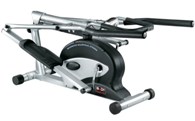 All our reviews will tell you the dimension and weight of the model. Some ellipticals can be folded up after use and stored away, others can be quite long. Most machines are made for easy portability, although some designers have a strange idea of what this actually means!
All our reviews will tell you the dimension and weight of the model. Some ellipticals can be folded up after use and stored away, others can be quite long. Most machines are made for easy portability, although some designers have a strange idea of what this actually means!
If you’re going to be storing your trainer away when not in use, portability is an important factor. If getting it out is too much hassle it could put you off training some evenings which obviously defeats the reason for having one. So please check whether the machine will fit where you’ll be using and storing it, plus if it’s a heavier model does it have wheels.
Maximum User Weight and Height
Please check that you do not exceed the maximum user weight for the model you’re considering. Manufacturers specify a safe weight limit for anyone using the machine so please think about who’ll be using the machine. If this limit is ignored the machine could break and even cause injury if in use.
You may find the warranty will be invalidated and, because the guidelines have been ignored, you’d have no claim for personal injury against the manufacturer.
Not all models will have a height limit as this is not a safety issue. However, if you’re above average height you may find some models do not have a long enough stride length to deliver the full benefits. Many models now have the ability to adjust the pedals and stride length which is useful if you’ll be sharing your machine with a partner of differing height.
Safety Handles
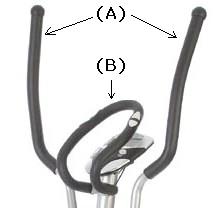 In addition to the motion handles (A), the ones that exercise your arms, many models now have what is known as ‘safety’ handles (B). This is a bit dramatic but these are fixed handles next to the console that allow you to rest your arms if your arms are getting tired but you want to keep training your legs.
In addition to the motion handles (A), the ones that exercise your arms, many models now have what is known as ‘safety’ handles (B). This is a bit dramatic but these are fixed handles next to the console that allow you to rest your arms if your arms are getting tired but you want to keep training your legs.
These are very useful and we suggest you get a model that has them – you’ll be grateful for them one day :0)
Most safety handles will have pulse sensors to check your heart rate – note these are not as accurate as a chest strap monitor.
Consoles
This is the control and display panel located at the front of the machine. If you can stretch to it we suggest you gat a trainer that has the ability to alter all the settings via the console – so you don’t have to pause and get off during your training session.
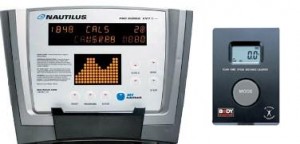 Also, the more information the console can tell you the better.
Also, the more information the console can tell you the better.
It’s rewarding and motivating to see how many calories you’ve burnt, how far you’ve travelled, the resistance and incline settings and just how fast your heart is beating and whether you’re training at the optimum level for a fat-burning workout.
Above you can see the two extremes, one from a model costing around £100, the other will set you back over £2,000 – guess which is which :0)
Models with pre-set programmes will also show you how far you’ve gone and, perhaps more importantly, how much further you still have yet to go!
Adjustable Resistance
With an elliptical trainer you determine the speed of motion – unlike a treadmill whose belt moves at the specified speed. What you alter on the trainer to vary the work rate is the resistance of the peddles and arms.
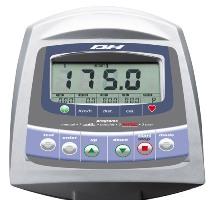 The cheaper models use air resistance to vary your effort levels but this isn’t so easy to operate as the far superior variable magnetic resistance method. Check that you can alter the resistance (and incline – see below) via the console with a touch of a button. with some models you may have to get off to adjust manually but these are fast disappearing.
The cheaper models use air resistance to vary your effort levels but this isn’t so easy to operate as the far superior variable magnetic resistance method. Check that you can alter the resistance (and incline – see below) via the console with a touch of a button. with some models you may have to get off to adjust manually but these are fast disappearing.
On the right you can see two green buttons with up and down arrows – these allow you to change resistance mid-workout. The higher spec models will have pre-set programmes that will adjust the levels automatically – more later.
Lower resistance gives you a purely aerobic workout, whilst higher resistance will help to build muscle tone and strength.
Adjustable Incline
This allows you to change the incline to replicate walking up hill. By altering the incline you’ll use different muscle groups. A higher incline will work the back and lower legs a little harder, whilst the lower setting will work the upper body more. As with resistance it’s best to get a model that you can alter this via the console.
Rear or Front Driven Elliptical?
You will see two types of elliptical, they either have the flywheel at the front or the back. Some people claim the front driven give a better lower elliptical motion whilst others will claim the rear driven work you harder. This, in our view, is purely subjective as most people won’t notice any big difference.
Pre-set Programmes
Once you start to pay around £150 for a model you’ll get built-in or pre-set programmes. These are great for adding variety to your training and will automatically change the machine settings such as resistance and incline to give you the optimum workout.
The more you pay the more specially designed programmes you’ll get to provide aerobic, fat-burning, strength building or specific muscle group workouts.
More recently many models now have specialised trainer software such as iFit that will measure your progress and maintain a record of what you’ve done for up to a year. The idea is they can replicate a personal trainer and, in some cases, they’ll even speak to you via speakers in your machine! Programmes start at around £10 – see Sweatband.com for some examples.
Pre-set programmes can only help to improve your chances of reaching your fitness goals and we thoroughly recommend you get a model with a good selection of them.
Luxuries
As you go higher up the price range you’ll start to see more and more ‘luxuries’ which aren’t going to directly improve your fitness but may make the training experience better. The happier you are on the machine the more you’ll use it so you may consider a model with a connection for your MP3 or iPod.
If the console has speakers and iFit or other trainer software compatibility, then you can load up specially designed programmes that will talk to you as you train which could have fitness benefits.
More recently you can get consoles with TV, DVD and even built-in video games! In our view we think this could be a distraction but many people already watch TV whilst using their fitness equipment so it comes down to personal choice.

